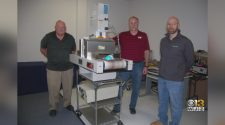Changing technology affects everything, including some things that we don’t usually think of as high tech.
For eons, building construction has followed a fairly steady path, especially in the way houses are built.
Every few years during the last half-century someone has come up with ways to construct houses in factories rather than by building them from the ground up outside on site.
Back in the late 1960s when I was working for the late California Assemblyman Bill Ketchum, an interesting character named Jess Unruh, the speaker of the Assembly, promoted something he called “factory built housing.”
Unruh was a Democrat, a wily politician who drove then-Gov. Ronald Reagan and the GOP nuts for a while.
As a Democrat, Unruh was the last person one would think of in connection with changing the way houses are built.
That’s because the folks who do the on-site work of building houses are usually union members, and Democrats support unions.
While Unruh was a strong supporter of organized labor, he understood that the way we built houses then — and still do — is not very efficient.
Ketchum was a Republican and a farmer who had gotten his hands dirty building and repairing all kinds of stuff and understood that there were better ways to build houses.
He supported Jess, but the concept of “factory built housing” didn’t go anywhere.
Over the years a couple of firms have leased property at the Mojave Air & Spaceport with the intention of building houses inside, out of the elements, on an assembly-line basis.
Again, usually because they were undercapitalized, these outfits didn’t succeed.
Two facilities in this region were built with modules constructed off-site.
One was the California City High School, sections of which were stored at the city’s airport for a while because construction got a bit ahead of a bureaucracy that delayed final assembly.
I and others visited the factory where these components were to be built before the decision was made to begin construction and were impressed how they went together is a clean and efficient environment.
The other use of this technology in East Kern is the California City Prison, which was constructed using large concrete modules assembled on site.
The former bank building on K Street in Mojave across from Mission Bank was constructed from two units trucked in and joined together and has served in several capacities over the years.
I served on a citizen’s committee formed by the Tehachapi Valley Healthcare District years ago to build a new hospital which studied factory built construction among other technologies.
With the advent of the twin concerns of climate change and a housing shortage, the idea of building houses more efficiently is again being considered.
My wife and I have been watching the PBS program “This Old House,” and their newer show “Ask This Old House,” since their inception.
Both shows emphasize the need to adapt new ways of thinking and doing to the business of providing shelter.
A recent This Old House series involved building a home in a clean factory and trucking the modules to the site for final assembly.
Over the years this entertaining and educational program has presented similar projects.
A recent article from the World Economic Forum listed six new concepts that are changing the way buildings are planned and built.
Of the six, perhaps the most interesting reported on a sort of “back to the future” technology that uses wood rather than concrete to construct multistory buildings.
In case you think this is a pie in the sky scheme, it’s already being done.
The advantage of wood over concrete is that wood comes from trees, which have the double effect of being renewable and helping the climate while they are growing.
This new technology is called “mass timber” and “can reduce construction time up to 25% and use up to one-third the energy production of steel and one-fifth of concrete in addition to using significantly less carbon-intensive production methods,” the piece reported.
According to the article, “the technology uses CLT (cross-laminated timber, formed by stacking and gluing perpendicular layers of wood) and Glulam (glue-laminated timber, formed by stacking and gluing layers of wood directly on top of each other) which are allowing even higher and stronger wood buildings.
Both of these technologies have been around for a while and are being used in new ways.
In another example, a Dutch 3D printing company is using 3D printing “to design and build the world’s first 3D printed steel bridge — all in mid-air.”
Hardly a day goes by with reports of new and ever-larger examples of the use of this disruptive technology.
3D printing is a technology that has grown by leaps and bounds since the time many years ago that I saw two early examples of it at the Michelson Laboratory at what is now the Naval Air Weapons Station at China Lake.
Those two examples used wood and plastic to construct small prototype parts using reductive technology as opposed to the additive technology now dominating this fascinating new tool.
The other technologies discussed in the piece involve developing software to improve the way buildings and large projects are planned.
Reading articles like this always raises the issue of jobs being replaced, like the reductions that will happen with the advent of electric cars, which have fewer parts to build and maintain.
As someone who started in this business when newspapers were printed on paper using type formed by hot lead to today’s digital publications, I fully understand this issue.
I also live in a town where boilermakers who maintained steam locomotives, a filthy occupation, lost their jobs when diesel locomotives arrived, to today, when many more people than the railroad employed locally employed designing and constructing spaceships and aircraft in spotlessly clean structures, and good jobs are going begging throughout the industrialized world because of a lack of trained technicians.














